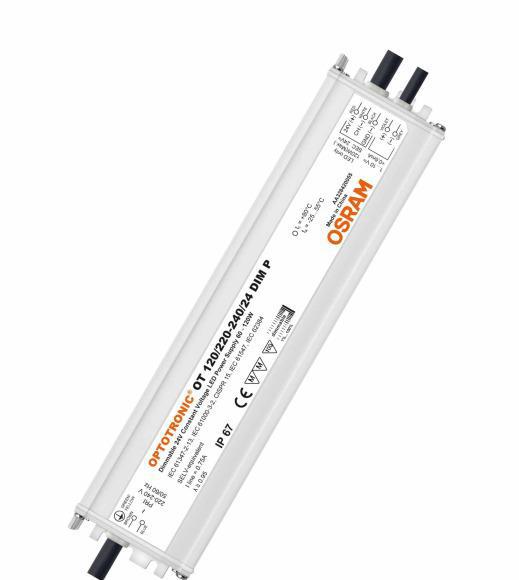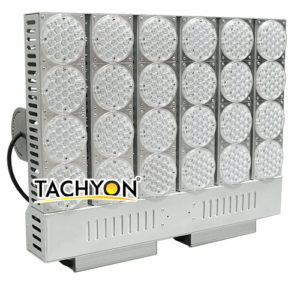The Functions of LED Power Supply
With the continuous development of LED lamp packaging technology and heat dissipation technology in recent years, the stability of LED lamps has reached a relatively good level. Light decay and color drift are mainly caused by products from poor manufacturers, mainly due to unreasonable heat dissipation design. Relatively speaking, the problem of LED lamp driving power supply is much more serious, which is the main cause of dead lamp or flicker. In other words, the LED lamp power supply has become a shortcoming of the quality of the LED lamp. According to the barrel theory, the life of the LED lamp driving power supply is the life of the LED lamp.
Conventional lighting street lights are separated from the lamp holder and the power source. It is the lamp holder that usually fails-the general standard for high-pressure sodium lamps stipulates a one-year warranty. The street lamp management unit will store a certain number of sodium lamps. The high-pressure sodium lamp has mature national standards, and the main parameters such as the size and power of the main accessories are unified and interchangeable.
The current LED lamp failure is mainly in the power supply, so the main thing is to solve the power supply problem. Due to the lack of mandatory unified standards for LED power supplies, the power supplies on the market are independent, single-channel, multi-channel, and different in size, which are difficult to replace.
With the emergence of ultra-high-power LED street lights and LED tunnel lights on the market, frequent LED drive power failures, and the use of built-in designs for LED street light drive power sources often make it difficult to maintain the power supply of LED lights. In addition, some manufacturers lack after-sales maintenance services, so the complaints of the owners have caused the public’s misunderstanding of LED lights after the media’s exaggerated publicity, which has affected the reputation of the LED industry.
Experience 1: Give up more than 4 outputs and develop single or dual outputs. Give up large currents and super currents and develop small currents.
The more the number of output channels, the more complicated it is, and the cost of solving the current interference between different outlets is very high. If it is not resolved, the failure rate is higher. In addition, the greater the number of output channels, the greater the total output current, and current is the main cause of heating, and the voltage itself does not directly cause heating. Simply put, the heart value is proportional to the square of the current, which means that if the current is doubled, the heat value will increase to 4 times. If the current is increased by 3 times, the heat value will increase to 9 times. In summary, the power failure rate of LED lights with single or double output will be much reduced.
Experience 2: Give up high-power and super-power, and choose high-stability small and medium-power power supplies.
Because the greater the power, the greater the heat generation, and the more compact the components inside, which is not conducive to heat dissipation, and the temperature is the culprit of the power failure. Furthermore, the low-power power supply is relatively mature and has advantages in terms of stability and cost. In fact, many high-power power solutions have not been verified by time and proved by practice. They are all projects launched in a hurry and are all experimental products. Therefore, failures are endless. In contrast, because of the earlier development of small and medium power power supplies, the technical solutions are much more mature.
Experience 3: Intelligent control is one of the advantages of LED lamps, and the power supply is the key to intelligent control.
Intelligent control is the most mature and effective in LED street lamp and LED tunnel lighting applications. Intelligent control can achieve stepless control of lamp power in different time periods and according to road traffic density, which not only meets application requirements, but also achieves huge energy saving The effect can save a lot of money for the highway supervisory unit. The application of tunnel lighting can not only save energy, but also can automatically adjust the brightness of tunnel entrances and exits according to the brightness situation outside the tunnel, providing drivers with a visual transition stage to ensure driving safety.
Experience 4: Heat dissipation and protection are the main external factors of power failure.
Not only the power supply itself will generate heat, but the lamps will also generate heat. How to dissipate these two heat sources reasonably is a problem that the lamp design engineer must consider. It is necessary to prevent excessive heat concentration, forming a heat island effect, and affecting the life of the power supply. Using a separate power supply solution is a good choice.
Experience 5: Modular design.
Modular design has become the current trend. It is necessary to find a way to integrate the module power supply. If the power supply can be plugged and unplugged to solve the maintenance problem, it will be welcomed by users. At the same time, it is necessary to establish interface standardization so that the LED lamp power supplies of different manufacturers can be universal.
Experience 6: Protective performance.
Protection issues are also very important. The penetration of moisture may cause a short circuit of the power supply, the sand and dust on the casing will affect the heat dissipation of the power supply, and exposure to the sun will easily cause high temperature and aging of wires and other components. From the experience in actual use, the failure rate of rotary wiring plugs is relatively high, and most of them are caused by water leakage.
Lesson 7: The feasibility of maintenance.
The problem of power failure cannot be completely avoided. The international LED lighting industry put forward the principle of ease of maintenance at the beginning of the 21st century. Only when the replacement of the power supply is as simple as the replacement of the light source of conventional lighting, can the user be happy. Even if the power supply is broken, the mood will not be too bad, and the user’s mood determines the fate of LED lamp manufacturers.
Summary: It is best to use a split design for the LED lamp power supply, while paying attention to the reliability and life of the power supply. Even if the cost is increased a little, only by designing products from the perspective of customers can a company achieve long-term development.
Dimming technology of LED power driver
With the wide application of LED constant current drive and the demand for dimming in specific occasions, LED dimming technology is widely used. The HX3143 constant current LED driver can use analog dimming and PWM dimming to dimming high-power LEDs. It can be easily and simply dimmed through a DIM pin, with high dimming accuracy and good linearity.
Realization of LED dimming function
LED drive circuit commonly used dimming methods can be divided into two: analog dimming and PWM mode. Because the brightness of the LED is mainly affected by the forward current, it has a positive relationship with the forward current density. The above two dimming methods change the brightness of the LED by changing the average current flowing through it.
Analog dimming: In this way, the current flowing through the LED is linearly adjusted in a continuous manner to change the brightness of the light, and the brightness of the LED can be adjusted in a larger range.
PWM dimming: Adjust the luminous brightness by repeatedly turning on and off the LED current within a unit time. The switching frequency is generally higher than 100Hz, so that this pulse current is not easy to be noticed by the human eye. The average current I flowing through the LED and the duty cycle D are linearly proportional.
HX3143 is an LED constant current driver with a step-down topology. The input voltage range can be 4~20V, and the ILED can be adjusted from 10mA~1.2A. It can drive single or multiple LED strings. The current of the LED is equal to the current flowing through the inductor. As the VIN voltage rises, this circuit adjusts the duty cycle of the current pulses flowing through the LED, L, and R2 by monitoring the voltage of the CS pin to make the LED current constant at the set value.
HX3143 can program the current flowing through the LED by setting the resistor Radj from CS to GND. The DIM pin can accept analog dimming and PWM dimming.
Analog dimming
The brightness of the LED is mainly affected by the forward current, and has a positive relationship with the forward current density. The greater the forward current, the greater the probability of recombination of electrons and holes, and the stronger the light-emitting brightness.
Analog dimming technology is to control the brightness of the LED by changing the average current flowing through the LED per unit time. For example, we need to reduce the brightness of the LED to 50% of the original brightness, and only need to reduce the current of the LED to half of the maximum value. . Analog dimming can be achieved by adjusting the resistance of the current detection resistor Radj to set the LED current, or by applying a DC voltage to the dimming control pin of the driver chip.
Variable resistance dimming converts excess electrical energy into heat on the resistor, which is a loss of energy. The biggest advantage of analog dimming is that it avoids the noise caused by dimming. During analog dimming, the driver is always in a continuous working state, and the power conversion efficiency of the driver decreases rapidly as the output current decreases. The use of analog dimming will increase the power consumption of the system. Another disadvantage of analog dimming is that the color temperature of the light emitted by the LED will vary with the specific function of the LED current, and the use of analog dimming should be avoided in situations with higher color temperature requirements.
PWM dimming
Pulse width modulation uses a switching circuit to quickly switch LEDs at a frequency that is not recognized by the human eye. The human eye looks like the LED is always shining, but the actual LED flashes once and again, but the frequency cannot be recognized by the human eye. The on-time and off-time of the switch tube per unit time determine the average current flowing through the LED, which also determines the brightness of the LED.
The response time of LEDs is generally in the range of several nanoseconds to tens of nanoseconds. Such light-emitting devices are very suitable for frequent switching at high frequencies. Therefore, we can easily achieve digital dimming of LEDs by periodically changing the duty cycle.
The PWM dimming function of HX3143 can be realized by modulating the DIM pin of the LED driver. A PWM signal can be added to the DIM pin, and the brightness of the LED can be adjusted by changing the duty cycle of the PWM signal. HX3143 can accept a wider frequency range and amplitude. As long as there is an external microcontroller that generates PWM control signals, dimming becomes very simple. Usually a 555 circuit can be used to generate the PWM signal.








